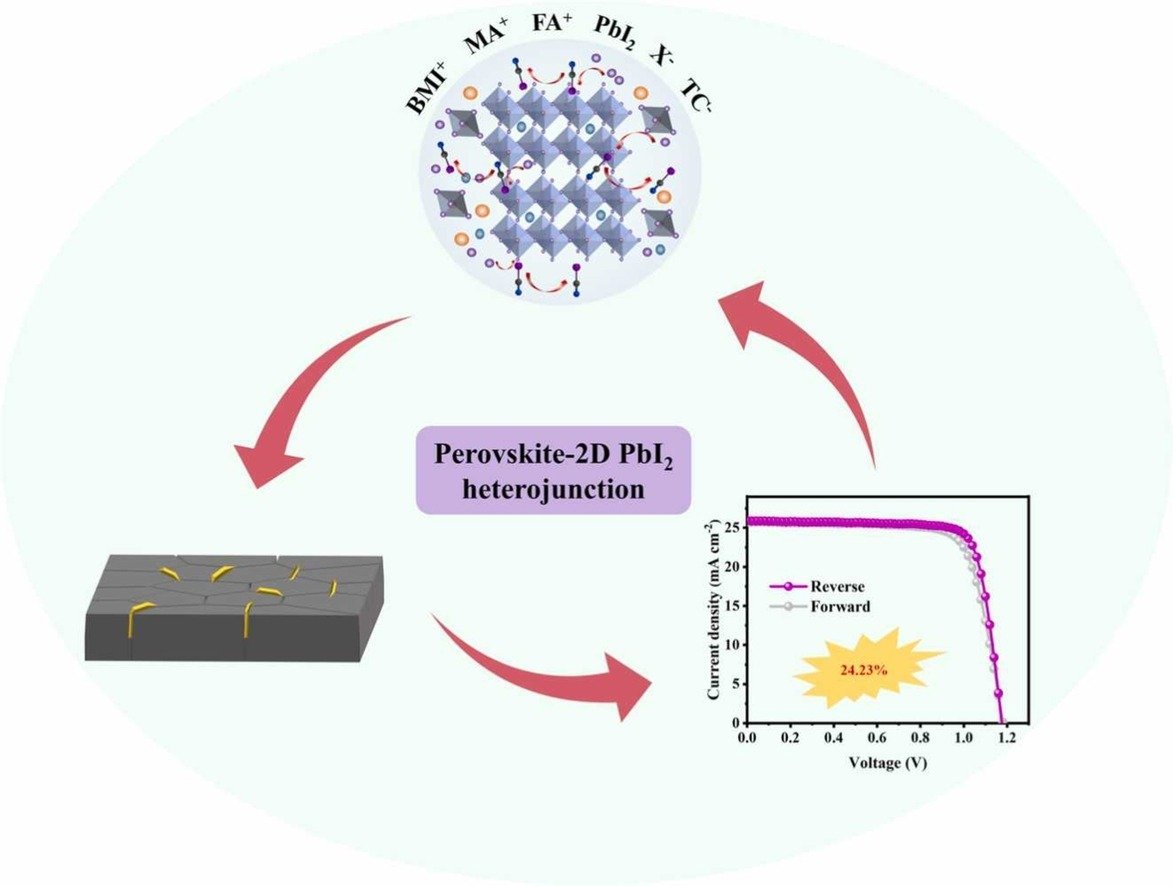Unraveling segregation behavior of inactive secondary phase driven by ion-competition reaction for perovskite-2D PbI2 heterojunction solar cells
Yajie Cheng, Junjie Ma, Huaiqing Luo, Meng Cai, Tangyue Xue, Guanghui Yu, Ziqiu Ren, Yanlin Song, Shou Peng, Yiqiang Zhang,
Nano Energy, Volume 115, 2023, 108690, ISSN 2211-2855,
https://doi.org/10.1016/j.nanoen.2023.108690
This study addresses the issue of undesirable segregation of inactive secondary phases in perovskite films, which negatively impacts charge-carrier transport and stability. The research delves into the chemical reactions and structural relationships responsible for this behavior. By converting the photoactive phase into an inactive one, a high-quality perovskite-PbI2 heterojunction film is created, improving carrier dynamics and achieving remarkable light resistance. The resulting perovskite solar cells reach an impressive efficiency of 24.23%. This work offers valuable insights into designing crystal structures for high-quality perovskite heterojunction devices.
How Paios was used
EIS, TPC, TPV, and capacitance-voltage (C-V) measurements were performed by Paios from Fluxim

